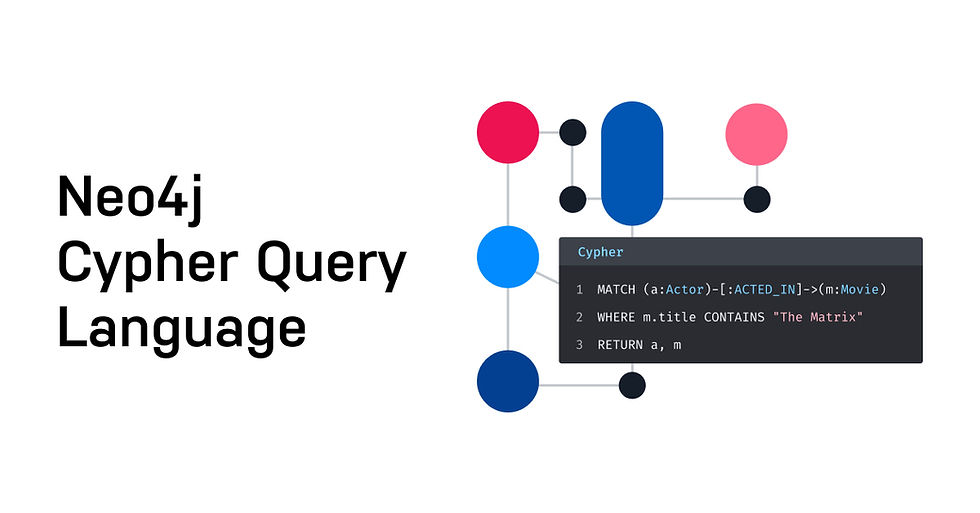
Welcome to our comprehensive guide on using the shortest path functions and ensuring consistent query results in Neo4j! This tutorial will help you understand how to find the shortest and all shortest paths between nodes and how to order your query results predictably.
Finding the Shortest Path Between Two Nodes
The shortest path function in Cypher helps you find the shortest route between two nodes in a graph. This function is useful when you want to understand the connectivity and relationships between different entities.
Example: Finding the Shortest Path Between Two Actors
Let’s find the shortest path between two actors, Keanu Reeves and Carrie-Anne Moss, in our dataset.
MATCH (a1:Person {name: 'Keanu Reeves'}), (a2:Person {name: 'Carrie-Anne Moss'})
MATCH path = shortestPath((a1)-[*]-(a2))
RETURN pathIn this query:
We match two nodes representing the actors Keanu Reeves and Carrie-Anne Moss.
We use the shortestPath function to find the shortest path between these two nodes through any relationships.
Finally, we return the path found, representing the shortest route in terms of relationships between the two actors.
This helps us understand how closely connected these two actors are within our graph.
Finding All Shortest Paths Between Two Nodes
The allShortestPaths function is similar to the shortestPath function but returns all possible shortest paths between two nodes. This is useful when multiple shortest paths exist, and you want to explore all of them.
Example: Finding All Shortest Paths Between Two Actors
Let’s use the allShortestPaths function to find all shortest paths between Keanu Reeves and Carrie-Anne Moss.
MATCH (a1:Person {name: 'Keanu Reeves'}), (a2:Person {name: 'Carrie-Anne Moss'})
MATCH path = allShortestPaths((a1)-[*]-(a2))
RETURN pathIn this query:
We again match two nodes representing the actors Keanu Reeves and Carrie-Anne Moss.
We use the allShortestPaths function to find all shortest paths between these two nodes through any relationships.
Finally, we return all the paths found.
The difference between shortestPath and allShortestPaths is in the number of paths returned. The shortestPath function returns only one path, while allShortestPaths returns all paths that have the shortest length, providing a more comprehensive view of the graph's connectivity.
Ensuring Consistent Query Results with ORDER BY
When working with Neo4j, you might notice that query results can come back in an unexpected order. This is because Neo4j, by default, does not guarantee any specific order unless explicitly instructed.
Understanding the Default Behavior
If you use a MATCH clause followed by a RETURN clause, the order of the results is not guaranteed. This means that every time you run your query, the results could be in a different order.
Example: Query Without ORDER BY
MATCH (m:Movie)
RETURN m.titleThe results of this query might come back in a different order each time you run it. To ensure a consistent order, you need to use the ORDER BY clause.
Example: Using ORDER BY for Consistent Results
Let’s say you want to query a list of movies and have them sorted by their release year.
MATCH (m:Movie)
RETURN m.title, m.released
ORDER BY m.releasedIn this query:
We match all movie nodes.
We return the title and release year of each movie.
We use the ORDER BY clause to sort the results by the release year.
This ensures that your results come back in a consistent and predictable order every time you run the query.
Conclusion
In this guide, we covered how to use the shortest path functions (shortestPath and allShortestPaths) to find the shortest and all shortest paths between nodes in a Neo4j graph. We also discussed the importance of using the ORDER BY clause to ensure consistent query results.
By mastering these techniques, you'll be able to effectively analyze and navigate your graph data, maintaining consistency and gaining valuable insights. Happy querying!
Comments